
          |
Some Other Masters
Gustav Vertunni was an Italian who lived and worked in Paris in the years after World War II, producing an exquisite line of miniature “portrait” figures of the kings and queens of France, and many other historical personages. He died in 1955, but his work lives on, eagerly sought by collectors on both sides of the Atlantic. He was one of the few miniaturists to include a significent number of women in his range, and his queens and court ladies are exquisite. Here are Vertunni’s versions of two French kings and a third king’s mistress. From left to right, they are Henri I, Charles VI “le Fol,” and Diane de Poitiers.
Thomas B. Costain’s novels are little read today, but he was the bestselling historical novelist of his day, and told a damn good story. His best known books are The Silver Chalice and The Black Rose, both of which were made into movies (the books are much better, especially in the former case), but my personal favorite is The Moneyman. As it happens, Vertunni made figures of three of the principles in the events on which Costain based his novel. Naturally I had to have them. Here they are: the king’s mistress Agnes Sorel, King Charles VII of France, and the moneyman himself, Jacques Coeur.
Vertunni made hundreds of spectacular miniatures during his long career. Some are common today, others extremely rare. His portrayal of the Emperor Charlemagne seated on his throne, seen here in the center, is not the rarest of Vertunni’s figures, but it may be the most sought after. I think it ranks as his masterpiece, and most Vertunni collectors would agree. Flanking the emperor here are Jean Sans Peur, Duke of Burgundy (John the Fearless, to us English-speakers) and Valentine Visconti, both of whom actually lived several centuries after Charlemagne. Battling BaldetsMarcel Baldet (1898-1972) wrote one of the classic books on toy soldiers and military miniatures, Figurines et Soldats de Plomb (Paris, 1961), but he was also a distinguished maker in his own right. Each of his figures was one of a kind, made by hand.
Selwyn Miniatures was formed in 1950 by Roy Selwyn Smith, a gifted young sculptor whose line of heraldic knights could have given even the great Richard Courtenay some serious competition. Selwyn issued five mounted figures and five knights on foot, but in 1951 their financial backer died, and the company folded after only nine months in business. The molds were sold to Britains, the giant of the toy soldier world. Painted simply in bright colors, without any heraldry, they became the “Knights of Agincourt,” the finest range of toy knights ever produced. But the original Selwyn versions, produced only for those few short months in 1951, are the ones that collectors really lust after. Here is Selwyn’s mounted version of Edward, the Black Prince.
On the left is another example of Roy Selwyn Smith’s artistry, an original Selwyn Miniatures figure of Sir Nele Loring, authentic in gules and argent. In the middle is his cousin from Britains’ original “Knights of Agincourt” range (not to be confused with W.Britains’ current range of figures of the same name). In this version he has no name, only a number: call him #1663. He was always painted in blue and yellow, as here. On the right is another Britains hollowcast, repainted magnificently by Tye Roberts as Sir Thomas Erpingham, who fought beside Henry V at Agincourt. Although Britains no longer makes the Selwyn figures, castings (solid cast and slightly smaller) can still be obtained from Soldier Pac and other recasters, and there are lots of chipped, faded, and broken examples out there that can be restored to glory with a little care.
Several different Japanese toymakers tried their hand at turning out lead soldiers during the American occupation that followed World War II. The best of them was probably Minikin. Many of the Minikin figures were unauthorized copies of figures made by a variety of British and European makers. Most famously, Minikin ripped off Richard Courtenay’s #6 pose, as seen in “Triplets” above. From time to time, however, the company did come up with some original figures of its own. Among them were an excellent range of Samurai, and this figure, representing King Henry IV of England. A bit of an odd choice of subject, given that Henry was the only British king Minikin ever produced, but a delightful figure all in all. It’s shown here in two of its color variations. |












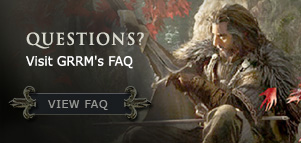
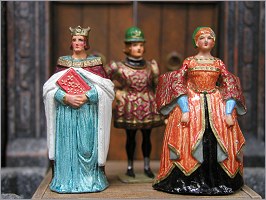 Vertunni the Virtuoso
Vertunni the Virtuoso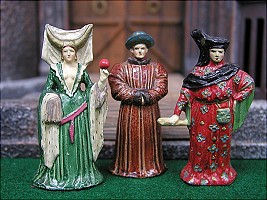 Costain, By Way of Vertunni
Costain, By Way of Vertunni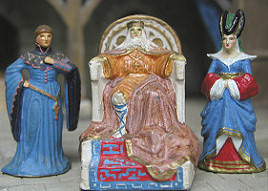 Charlemagne and Friends
Charlemagne and Friends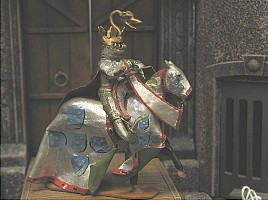
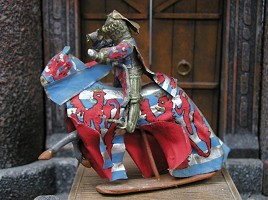
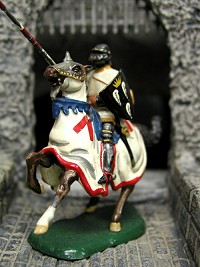 Nine Months of Glory
Nine Months of Glory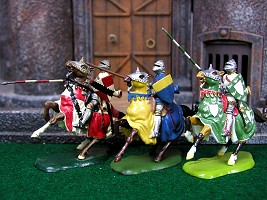 Cousins in Chivalry
Cousins in Chivalry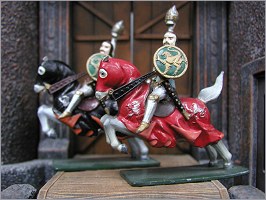 Minikin’s Marvelous Henry
Minikin’s Marvelous Henry